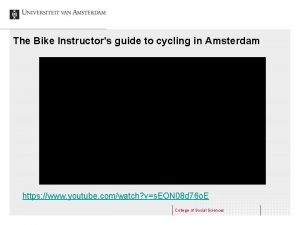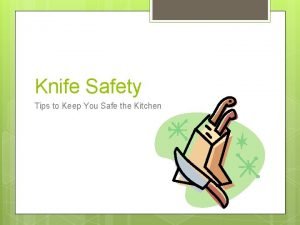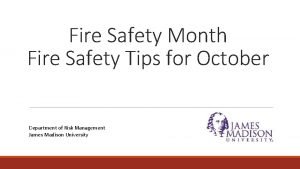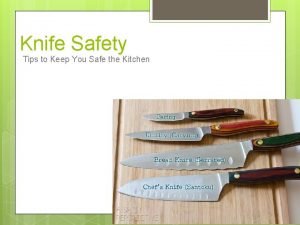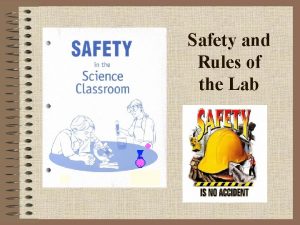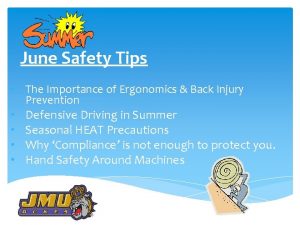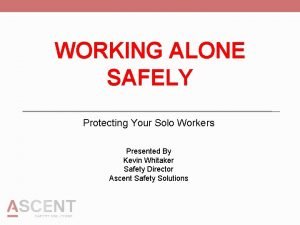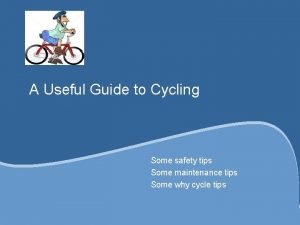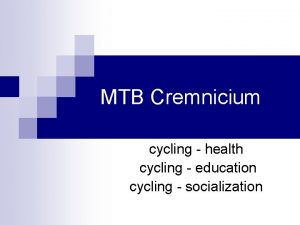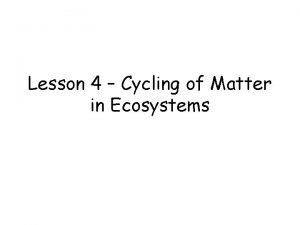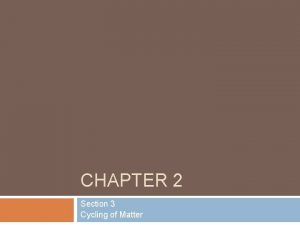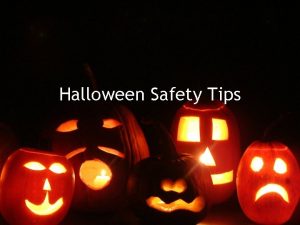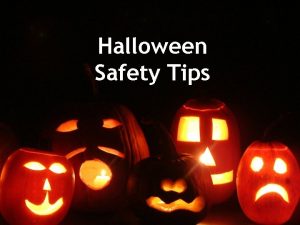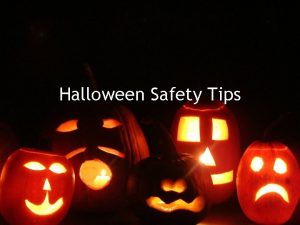A Useful Guide to Cycling Some safety tips




















- Slides: 20

A Useful Guide to Cycling Some safety tips Some maintenance tips Some why cycle tips

Safety when cycling • Currently in the UK there is no legislation which places any requirement on you to actually wear a helmet. Whether to wear a helmet or not is currently a matter of personal choice. • My choice is always to wear one. . .

Safety when cycling • Every year in this country over 16, 000 cyclists are killed or injured in reported road accidents. • In 2007 – Killed 136 Seriously Injured 2, 428 Slightly Injured 13, 631 Total 16, 195 • These are reported road accidents only. Between 60% to 90% of cyclist casualties are not reported, especially if the victim is a child and it is a bicycle-only accident. The above figures also exclude cycling accidents that occur away from the road, which could number as many as 150, 000 per year. • About one quarter of the cyclists killed and injured are children. Cycling accidents increase as children grow older and peak at around 16 years.

Safety when cycling… Some facts CYCLING ACCIDENTS • 90% occur in urban areas • 75% happen at, or near, a road junction • 80% occur in daylight • 80% of cyclist casualties are male • About one quarter of the cyclists killed or injured are children • Around three quarters of cyclists killed have major head injuries.

A must have accessory? 96% of cyclists killed were reportedly not wearing helmets. Medical research shows that 88% of cyclists’ brain injuries can be prevented by a bicycle helmet. Universal use of helmets could prevent one death every day and one brain injury every four minutes.

What can a helmet do? • As with most safety orientated products, bicycle helmets have to pass certain standards prior to being allowed to be sold. What may be surprising is the exact nature of those standards. • Cycle helmets are only designed and tested to withstand an impact equivalent to an average weight rider travelling at a speed of 12 mph falling onto a stationary kerb shaped object from a height of 1 metre. • This is the equivalent of falling from your bike onto the road or the kerb edge. • Helmets are not tested nor expected to be able to offer full protection if you come into contact with a vehicle which is moving.

The importance of size. • If you decide that you should wear a helmet then for that helmet to be able to offer you any worthwhile protection it must be the correct size AND fit. • Bicycle helmets are manufactured from expanded foam polystyrene, similar to the type of stuff polystyrene coffee cups are made from. Polystyrene is structurally rigid and can be moulded into virtually any shape. However whilst being structurally rigid, it is a material which is easy to damage by crushing because it contains a high number of tiny air pockets. The process of crushing absorbs energy. It is these facts which make it ideal for the construction of bicycle helmets.

Interested? • Buy a helmet that meets the safety standards of the European Union (CE), or the Snell Memorial Foundation. Wearing a helmet correctly is vitally important to the ability of the helmet to work! • You should try on a number of helmets before buying. Each manufacturer uses a different "model" head form and even same size helmets can be dramatically different. The helmet should be close fitting all the way round. Always do these things to ensure a proper fit: • Tighten the chin strap to keep the helmet from slipping forward or backward. • Only two fingers should fit under the chin strap. • Place the helmet directly over the forehead.

Safety when cycling • The safety benefits offered by wearing a helmet do exist, but these benefits should be neither over-estimated nor under-estimated. Surely anything which can offer an extra amount of safety is worthwhile as long as it does not leave you with a false sense of security. • I would recommend the wearing of a correctly fitting and fitted bicycle helmet.

Blingtastic… • There is a legal requirement, as with all road going vehicles, for lights to be fitted and displayed during the hours of darkness. But having lights fitted to your bike is just common sense. Lights come in all shape and sizes. • Standard battery bulb lights • High Power Rechargeable headlights (Xenon, Halogen, HID and LED) • LED (Light Emitting Diode) lights • Dynamos The important thing is that you check they are working before you head out! You could even bring some spare batteries – just in case.

Before starting off… a little maintenance check • Check your tyre pressure (it is on the tyre what it should be). This will help prevent a puncture. A flat tyre means you have to put more effort into cycling!! • Check your brake pads- front & rear. Squeeze the bicycle's brake pads against the bikes rim to see if they are at the right height. The bike's brakes should not rub on the tyre nor should they be able to slip under the bike rim. (Very dangerous!) • The edge of the pads should touch the bike rim with the brake applied lightly. When you apply the brake hard, the pads squish a little and you should get full contact to the rim.

After the ride… • Wash down your bike, especially in winter- this will help prevent corrosion. • Your bike will keep in good working order for longer!

Benefits of bikes. . . Why should I cycle? Because it is. . . • Good for you. . . • Regular cyclists enjoy a fitness level equal to that of a person ten years younger. • Cycling at least twenty miles a week reduces the risk of heart disease to less than half that for noncyclists who take no other exercise. • During rush-hour, a bicycle is about twice as fast as a car - good if you hate traffic jams!

Benefits of bikes. . . Why should I cycle? Because it is. . . Good For Your Wallet. . . • Bicycles require no road tax, no MOT, no insurance, no licensing, no breakdown recovery services, and above all no fuel bills • A good bicycle needs at most about £ 50 -worth of maintenance a year - less if you do a bit yourself. How much would a car need? • A good bicycle will last for years, if not decades. • A bicycle can be parked just about anywhere, so no expensive car park bills.

Benefits of bikes. . . Why should I cycle? Because it is. . . • Good For Your World. . . • Twenty bicycles can be parked in the same space taken up by one car. • To make a bicycle requires only a fraction of the materials and energy needed to make a car. • Bicycles produce absolutely no pollution - they are a lot quieter too. When was the last time you saw a rusting, burnt-out bicycle? • Cars kill and maim thousands of people every year - bicycles don't.

You have the same responsibilities as other road users… • Obey traffic signs & • Have a good position signals. on the road. . Not in the middle of the road. . • Do not run red Not on the verge. lights…ever!!! • Indicate- motorists can • Watch out for hazards - manhole covers, car not read minds! doors.

The off-road option… • Off-road cycling can mean easy, unsurfaced routes such as canal towpaths or challenging, exciting mountain trails. • The National Cycle Network is a great success story. Nearly half of you live within a mile of it. The Network carries over 230 million journeys each year. • Fife has one of the UK's most comprehensive cycling networks. Over 300 miles (500 km) of sign posted cycle network includes a variety of leisure and commuting routes. • Terrain varies from off road disused railway tracks to routes in forests and from networks in towns and networks in quiet country lanes.

Should I cycle… Yes. . . It is fun, cheap, good for you… BUT Be safe- obey the rules.

Quick Quiz 1. • 2. • 3. • 4. • 5. • Which handlebar is your front brake on? A: Right hand B: Left hand When you're cycling along the road and want to take a left turn what's the first thing you do? A: Indicate B: Look behind you at the traffic C: Brake When would you ring your bell? A: When you're riding up behind a pedestrian B: When you see your friend C: To indicate If you squeeze your tyre with your finger and thumb how should it feel? A: Hard B: Squashy C: So you can touch the wheel rim What colour traffic light means you can legally cycle through them? A: Red B: Amber C: Green

Quick Quiz 6. What is a bicycle helmet made from? A: Polystyrene B: Plastic C: Glass 7. Where do most cycling accidents happen? A: Country lanes. B: Urban areas C: Cycle paths 8. It is a legal requirement to wear a helmet? A: True B: False 9. It is a legal requirement to have lights? A: True B: False 10. Twenty bicycles can be parked in the same space as one car? A: True B: False
 Guide to cycling
Guide to cycling Here are some tips
Here are some tips Here are the tips
Here are the tips What are the useful materials at home?
What are the useful materials at home? Kitchen knife safety tips
Kitchen knife safety tips Safety tips for october
Safety tips for october Kitchen knife safety tips
Kitchen knife safety tips Helicopter safety tips
Helicopter safety tips Lab safety tips
Lab safety tips Mobile equipment safety policy
Mobile equipment safety policy Trangia cooking
Trangia cooking Gas welding safety tips
Gas welding safety tips June safety tips
June safety tips Safety tips for working alone
Safety tips for working alone Tom harter floor hockey
Tom harter floor hockey Helmet safety tips
Helmet safety tips A bird stalks kills then eats
A bird stalks kills then eats Noaa hysplit
Noaa hysplit Cycling of matter in an ecosystem
Cycling of matter in an ecosystem Section 3 cycling of matter answer key
Section 3 cycling of matter answer key Quantitative research about cycling
Quantitative research about cycling
